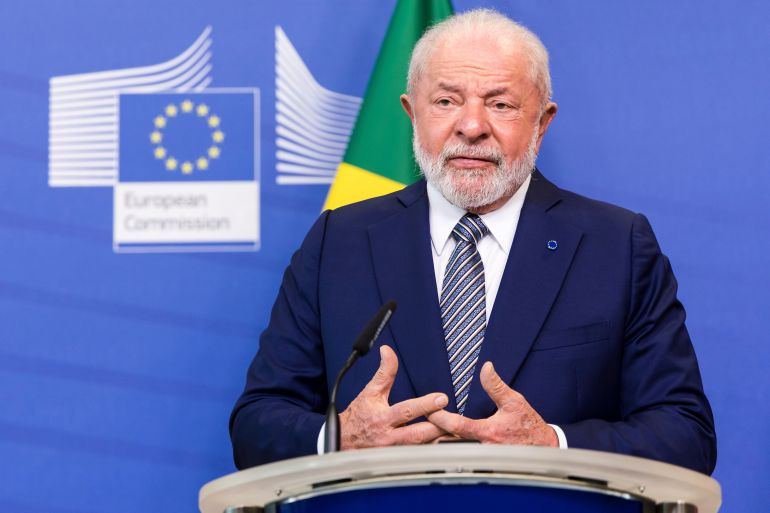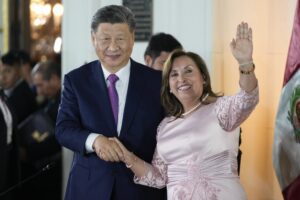Deforestation in Brazil’s Amazon fell in July to its lowest level for the month since 2017, according to preliminary government figures.
Satellite data from Brazil’s National Institute for Space Research (INPE) on Thursday indicated that 500 square kilometres (193 square miles) of rainforest were cleared in the month, a 66 percent drop from the same period a year ago.
In the first seven months of the year, deforestation has fallen a cumulative 42.5 percent from the same period of 2022, INPE’s preliminary data showed.
The data comes after figures last month showed deforestation in the Amazon had fallen 34 percent in the first half of 2023.
Sequential drops in June and July are especially promising, as monthly data on Amazon deforestation often spikes this time of year, when the weather turns drier.
“We are seeing the deforestation growth curve invert,” Environment Ministry Secretary Joao Paulo Capobianco told reporters in Brasilia.
The fresh data come as President Luiz Inácio Lula da Silva gathers next week with leaders of Amazonian countries for a summit in northern Brazil to discuss ways to protect the world’s largest rainforest.
President Lula said on Wednesday that the summit would seek to draw up a common policy for the first time to protect the region, which will include dealing with security along the borders and asking private businesses to help with the reforestation of 30 million hectares (74 million acres) of degraded land.
Leftist leader Lula took office in January promising to end deforestation by 2030 after destruction surged under his predecessor Jair Bolsonaro, who slashed environmental protection efforts.
Speaking to international media on Wednesday, Lula said: “We know we have a responsibility to convince the world that investing is cheap if it’s a matter of saving the rainforest.”
“The world needs to help us preserve and develop the Amazon,” he added.

Experts praised the reduction in deforestation in the early months of the Lula administration, while calling for continued vigilance in the coming months, when fires and clear-cutting often peak in the region.
“It’s a very significant drop for a drier month,” said WWF-Brasil Science Manager Mariana Napolitano.
“That shows us that the emergency measures that were taken, especially command and control ones, have been working. But deforestation remains at high levels, and to zero it by 2030 more structural measures will be needed.”
Last month, Brazil’s Environment Minister Marina Silva said that the fall in deforestation was a direct result of the Lula government quickly ramping up resources for environmental enforcement.
During Bolsonaro’s 2019-2022 term in office, deforestation of the Amazon shot up 75 percent compared with the average over the previous decade. The far-right former leader had called for more farming and mining on protected lands, saying it would lift the region out of poverty.
Environmental protection is a key issue as the South American trade bloc Mercosur negotiates a long-delayed free trade accord with the European Union.
The EU recently made new demands of the four Mercosur countries – Argentina, Brazil, Paraguay, and Uruguay – to fight environmental crimes.
Source : AL JAZEERA
















